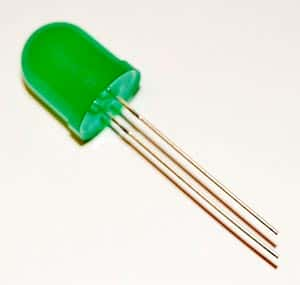 People tend to make up myths about things not understood properly. For example, we have been using incandescent bulbs for over 100 years now, and some think they offer the best illumination possible. Studies related to energy consumption and investigations into the spectral light distribution have debunked this myth about incandescent lamps being superior. People are readily moving over to fluorescent types and lately, to LED types for meeting their illumination requirements. However, the fear of the unknown is catching up – myths about LEDs.
People tend to make up myths about things not understood properly. For example, we have been using incandescent bulbs for over 100 years now, and some think they offer the best illumination possible. Studies related to energy consumption and investigations into the spectral light distribution have debunked this myth about incandescent lamps being superior. People are readily moving over to fluorescent types and lately, to LED types for meeting their illumination requirements. However, the fear of the unknown is catching up – myths about LEDs.
As individuals and companies begin to realize that LEDs can help to save money by reducing energy consumption, some people insist that there are problems with LEDs. In reality, LEDs are simply harmless, as we discuss some of the myths associated with them.
Myth 1: LEDs Can Make You Go Blind
Recently, a study conducted on the effects of LED light on human eyes or more specifically, on human retinal cells, was published in an issue of the Journal of Photochemistry and Photobiology. According to the authors, LEDs can harm human eyes. In their experiment, the authors found that human retinal cells were affected if they were exposed to 5mW per cm2 of light from an LED for 12 hours. That is an equivalent exposure to light from a 100W incandescent lamp at a distance of 4-inches for a 12-hour period.
However, light at that intensity and duration will certainly damage anyone’s eyes, irrespective of the source. That is also the reason one must not stare at the sun for any length of time. The lens within the human serves to focus light on to the retina. This is similar to any convex lens focusing the sun’s rays on a black paper causes the paper to start burning. Staring at any intense light source for some time is likely to burn a hole in the retina.
Myth 2: Blue LEDs Are More Dangerous Than Others Are
Again, independent of the light source, bright blue light is not very good for the eyes. Blue light may cause nausea and temporary headaches and long-time exposure could damage the retina permanently.
LED makers often use a primary blue LED and use a special phosphor to down-convert it to produce white light. That has given rise to the myth that blue LEDs are dangerous and they may cause cancer. However, no evidence has been found to substantiate this. Medically, blue light does lower melatonin levels in humans leading to a weakening of the immune system. Again, no link has been found between cancer and immune systems weakened with LED light.
Myth 3: LED Brightness Is Not Enough and the Light Quality Is Questionable
This may have been true at some point of time in the past, but now, LED lights are replacing halogen lamps. LEDs are available with color temperatures ranging from warm white to daylight (2,500K t0 6,500K) and with CRI or Color Rendering Index between 75 and 90. The reference for this measurement is the incandescent bulb, which by definition has a CRI of 100. In comparison, low-pressure sodium vapor lamps have a CRI of -44, mercury vapor lamp’s CRI is 49 and quartz metal halide lamps rate at a CRI of 85.
